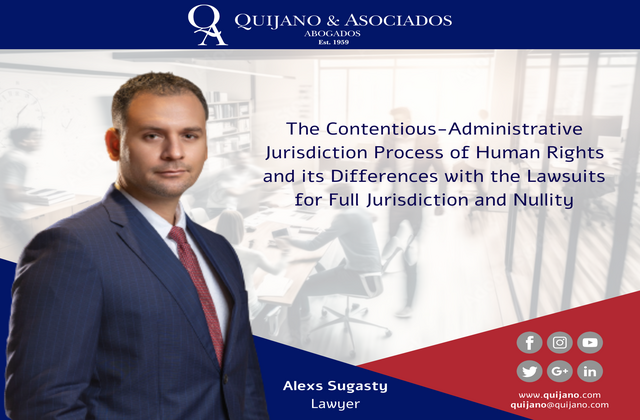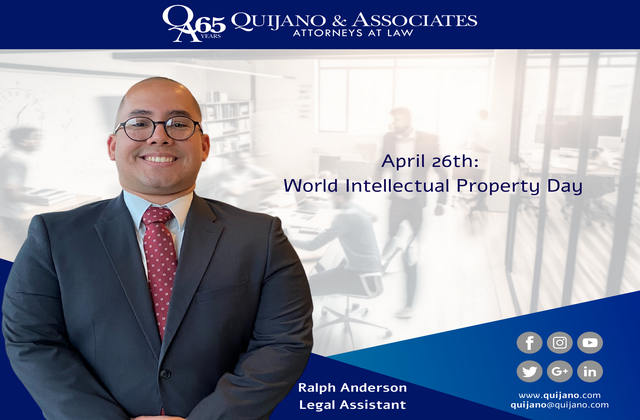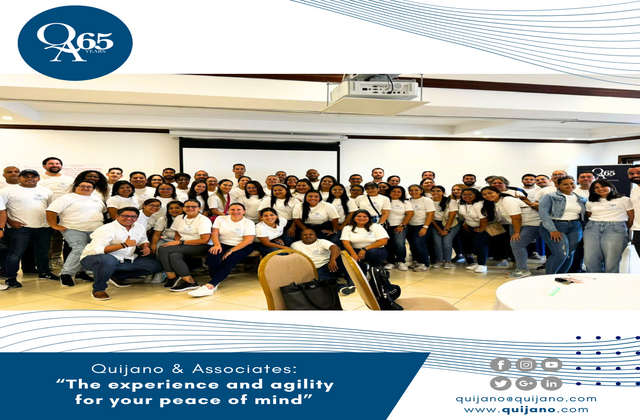The Contentious-Administrative Jurisdiction Process of Human Rights and its Differences with the Lawsuits for Full Jurisdiction and Nullity

I. Introduction
Human rights are those liberties, faculties, institutions, or claims related to primary or basic goods that include every person, by the simple fact of their human condition, for the guarantee of a dignified life. They are independent of particular factors such as status, gender, sexual orientation, ethnicity or nationality; and they are independent or do not depend exclusively on the current legal system.
Human rights enforceable against the public administration are those of a civil and political nature. The contentious-administrative jurisdiction process for the protection of Human Rights is aimed at the protection of certain human rights of individuals against acts of the public administration that could violate them. That is to say, the so-called “justiciable human rights.”
In practice, on many occasions, some colleagues have confused or mistaken the strategy when filing a contentious-administrative process for the protection of human rights, when in reality the appropriate thing was to file a claim for Full Jurisdiction or for Nullity, therefor, in this work we will briefly explain some differences that can be very useful in order to identify the type of process that should be filed in a specific situation ( see Resolution of August 29, 1995, Issued by the Third Chamber of the Supreme Court of Justice within the Contentious-Administrative lawsuit for the Protection of Human Rights, filed against resolution No. 001-94 without date, issued by the Rector of the University of Panama, by virtue of which the payment of the price agreed between the UNIVERSITY OF PANAMA and the plaintiff is DENIED).
The contentious-administrative jurisdiction processes for the protection of human rights are regulated by Law 135 of April 30, 1943, and Law 33 of September 11, 1946, but the aggrieved party will not be required to previously exhaust the governmental means; and the Administration Attorney will only intervene in the interest of the law.
II. Definitions
In order for the reader to fully understand this article, we will try to define some relevant concepts.
- Administrative Act: Declaration issued or agreement of will be entered into, according to law, by an authority or public body in the exercise of an administrative function of the State, to create, modify, transmit or extinguish a legal relationship that in some aspect is governed by the Administrative Law.
- Administrative Litigation: it is that jurisdiction destined to the knowledge and application of Law in the administrative order or Administrative Law, that is to say, the one referring to the normative set destined to the regulation of the activity of the Public Administration in its contentious or control version of the legality and subjection of the latter to the purposes that justify it. As well as to attend the resources of the administered against resolutions of the administration that they consider unfair.
- Justiciable Human Rights: are those rights that belong to every human being due to their status as such and are based on the dignity that corresponds to every human person. Human rights that are legally enforceable before the Public Administration are justiciable.
- First Generation Human Rights: First Generation Rights or Civil and Political Rights refer to the first rights that were enshrined in domestic and international legal systems. Civil and Political Rights are aimed at the protection of the human being individually, against any aggression from any public body. They are characterized because they impose on the State the duty to refrain from interfering in the exercise and full enjoyment of these rights by the human being (right to life, legal security, freedom, equality, etc.).
- Legality: When speaking of legality, reference is made to the presence of a system of laws that must be complied with and that grants approval to certain actions, acts or circumstances. Legality is, then, everything that is carried out within the framework of written law and that has as its supposed consequence respect for the guidelines of life and coexistence of a society depending on what each one of them understands by such a concept.
- Administrative Channels: Mechanism to control the legality of administrative decisions, exercised by the Public Administration itself, and which is made up of the resources that those affected can propose against them, to ensure that the Administration reviews them and, consequently, confirms them, modify, revoke, clarify or annul. (Law 38 of July 31, 2000, article 201).
III. Object and Purpose
The objective of this type of process is the safeguarding of justiciable human rights, that is to say, those legally enforceable before the public administration. Likewise, its purpose is to annul the administrative acts issued by the National Authorities (With Command and Jurisdiction throughout the country).
The Third Chamber (Contentious-Administrative Jurisdiction) of the Supreme Court has indicated, in innumerable rulings, that this type of process specifically includes justiciable human rights of a fundamentally civil and political nature; clarifies that those of an economic, social, or cultural nature are excluded from this type of process because they are the so-called programmatic rights.
Its purpose, if applicable, is to restore or repair the violated right, when through said administrative acts, justiciable human rights provided for in the laws of the Republic are violated, including those that approve international conventions on human rights.
IV. Justiciability of a Right
The justiciability of a right comes to be, the legal condition of certain assets or rights, which can be claimed in court; or of certain subjects, who can be prosecuted by it.
In the field of human rights, the following are considered justiciable: individual or fundamental rights, also called civil and political or first-generation rights, which are enforceable before the competent national and international Courts; and all individuals of the human species, who are responsible for the commission of serious crimes against the law of nations, and, therefore, prosecutable before national and international justice, depending on the case.
First generation human rights, that is to say, the first to appear chronologically, are also known as individual rights or interests, and they emerged in the 18th century as a result of the American and French Revolutions, which were affirmative social reactions of individuals against the monarchical absolutism. The assets of the personality protected by the rights of this generation are the so-called civil and political rights or freedom. The former includes, among others, the rights to life and personal integrity, equality before the Law, penal guarantees, and personal freedoms, expression, assembly, association, worship, etc., while the latter revolve mainly around the rights to elect and be elected, and political participation. They are holders of these rights, as it is easy to guess, people.
Although the effective recognition of civil and political rights still leaves much to be desired, the debate on the justiciability of economic, social, and cultural or second-generation rights, which involves moving from the Rule of Law to the Welfare State or from mere political democracy to full economic and social democracy, has already begun.
V. Characteristics.
a. It is a special process
The contentious-administrative jurisdiction for the protection of human rights is a special process, since it is a process in which claims are made against the public administration and which is aimed at protecting the human rights provided for in the laws against administrative acts that may harm them.
b. It is a process aimed at protecting justiciable human rights
As we have mentioned, this type of process has the noble purpose of protecting the human rights of individuals against acts of the Public Administration that could violate them. The legally enforceable human rights before the Public Administration are fundamentally those of a civil and political nature, since economic, social, and cultural rights are rights-programs that only oblige governments to create favorable social and economic conditions for the progress of those.
c. Protects Human Rights against violations arising from administrative acts issued by national authorities
Regarding this characteristic, we can establish, as we have previously mentioned, that the acts that can be challenged are administrative acts issued by national authorities that violate justiciable human rights. Regarding the reference to the national authorities, the Third Chamber has said:
“The conception of national authority is conceived, more than as a formula for the exclusion of acts of foreign authority, to the scope of competence and extension of the authority in the national territory. In such a way that they are only appealable under this process, the acts originating from authorities with competence throughout the national territory. Consequently, administrative acts that violate human rights, emanating from a public authority that lacks jurisdiction at the national level, cannot be attacked through this process.
It should be noted that the appeal against jurisdictional acts is not provided for. The term justiciable, which is mentioned as an attribute that the human right must have for its protection, can be the subject of discussion and apparently part of the existence of non-justiciable human rights, which leads in particular to whether the violation of economic, social and cultural rights can be invoked or sued through jurisdictional channels.
d. The Administration Attorney will only intervene in the interest of the Law.
One of the most interesting characteristics of this special process is that the Administration Attorney must intervene in defense of legality, whenever it is a possible violation of human rights.
e. Prior exhaustion of the Administrative Channels is not required.
In this type of process, the exhaustion of the Administrative Channels does not constitute a necessary procedural budget for the admission of the claim, as occurs in the full jurisdiction process and in the nullity process. This does not mean that preparatory acts or mere procedures can be challenged. They must be definitive acts, even if they are not firm because it is possible to file, against them, appeals through the government. The administrative acts that resolve the substance of a business or matter or that put an end to an administrative action are final.
Given the importance of the protection of human rights in this special process, the prior exhaustion of the Administrative Channels was not considered necessary. This allows anyone who considers themselves aggrieved in their human rights to go directly to the Third Chamber of the Supreme Court of Justice, unless there is a special law that for a specific case requires, within a specific procedure, that certain appeals be filed in the administrative channels; but, in the absence of this exception, the general rule is that such prior exhaustion is not required.
f. It is a kind of legal protection and can be invoked by a legal entity.
As the Chamber has stated, it is a kind of legal protection, which, like the constitutional remedy, does not repair economic rights, it is limited to revoking the order that violates the right and restores freedom and the violated right to its natural state, that is to say, to the existing situation before the violation.
The Chamber has also made it clear that both legal entities and natural persons can use this lawsuit against administrative resolutions that violate their human rights.
VI. Procedure.
It follows the rules of the administrative-contentious jurisdiction processes of Full Jurisdiction and nullity, those of the first type of process if it is about administrative acts that affect individualized situations and the restoration of the injured human right is requested, and those of Nullity if only the annulment of the administrative act.
a. Demand formalities.
You must comply with the legal provisions established in article 43 of Law 135 of 1943, which are:
- The designation of the parties or their representatives;
- What is demanded;
- The fundamental facts of the action;
- The expression of the dispositions that are considered violated and the concept of the violation.
b. Procedural requirements
Subjective Procedural Requirements: they are the same as in ordinary processes (annulment or full jurisdiction).
- Laws 135 of 1943 and 33 of 1946 are applied to it;
- The competence to know this type of processes is of the Third Chamber of the S.C.J:;
- The Solicitor of the Administration in the Interest of the Law intervenes; and
- Legitimation to act: people who invoke a violation of their Justiciable Human Rights.
Objective Procedural Requirements: the claims of the parties must be based on the violation of a justiciable human right.
- If only the annulment of the administrative act is sought without requesting reparation or restoration of the right, the rules of the annulment process must be followed;
- If these are acts that affect individualized legal situations and the restoration of the violated human right is requested, the rules of full jurisdiction processes will be applied. When referring to this type of process in terms of prescription, the term to file the claim will be two (2) months, as provided in Law 33 of 1946.
This type of claim must comply with the legal prerequisites established in article 43 of Law 135 of 1943. However, it is important to mention that the claim that initiates this process must clearly indicate which human right is violated, the respective law that establishes it and what the violation that the contested administrative act causes or may cause consists of.
c. Issuance of the appealed administrative act.
The acts that can be challenged are administrative acts issued by national authorities .
Regarding the referenceto the national authorities the Chamber has said:
- The conception of national authority is conceived, more than as a formula for the exclusion of acts of foreign authority, to the scope of competence and extension of the authority in the national territory.
- They are only appealable under this process, acts from authorities with jurisdiction throughout the national territory.
- Administrative acts that violate human rights, emanating from public authority that lacks competence at the national level, cannot be attacked through this process.
- The appeal against jurisdictional acts is not foreseen.
VII. Comparative chart of nullity processes, full jurisdiction, and protection of human rights
During the writing of this article, we have briefly mentioned some differences between these three large processes that are filed through Administrative Litigation and that are the responsibility of the Third Chamber of the Supreme Court of Justice, but through this chart we want to better illustrate their main differences:
| Nullity Process | Full Jurisdiction | Protection of Human Rights |
| It attacks resolutions that affect the rights of an undetermined number of people. | It attacks resolutions that affect property or economic rights of a specific group of people or a single person. | Attacks resolutions that affect justiciable Human Rights |
| Does not prescribe | Prescribes in two (2) months | In the case of acts that affect individualized legal situations, the term to file the claim will be two (2) months. |
| It can be presented as many times as you want (it does not lead to res judicata when it is denied). | It makes transition to res judicata in the 2 cases. | Transit to res judicata. |
| It has effects in the future. | It has retroactive effects because it restores the right and the damages caused. | It has retroactive effects because it restores the right and the damages caused. |
| The Administration Attorney intervenes in the interest of the Law. | The Administration Attorney intervenes in defense of the challenged act. | The Administration Attorney intervenes in the interest of the Law. |
VIII. conclusions
- Contentious-Administrative Jurisdiction Lawsuits of Human Rights are those demands aimed at obtaining the protection of a justiciable human right, violated through an administrative act issued by national authorities, and may be heard by the Third Chamber of the Supreme Court of Justice through a special process of Protection of Human Rights.
- To file a Contentious-Administrative Jurisdiction Lawsuits of Human Rights, it is not necessary to exhaust the administrative channels.
- These Demands are not suitable or do not attack violations of economic or patrimonial rights; but justiciable human rights violations.
- Both legal entities and natural persons can use these claims against administrative resolutions issued by National Authorities that violate their human rights.
- The Court has said that these are a kind of legal protection, which, like constitutional remedy, does not repair economic rights, but is limited to revoking the order that violates the right and restores freedom and the violated right to their state. natural, that is to say, to the situation existing before the violation.
- The Contentious-Administrative Jurisdiction Lawsuits of Human Rights are only viable against resolutions issued by Authorities with Command and Jurisdiction throughout the National Territory.




